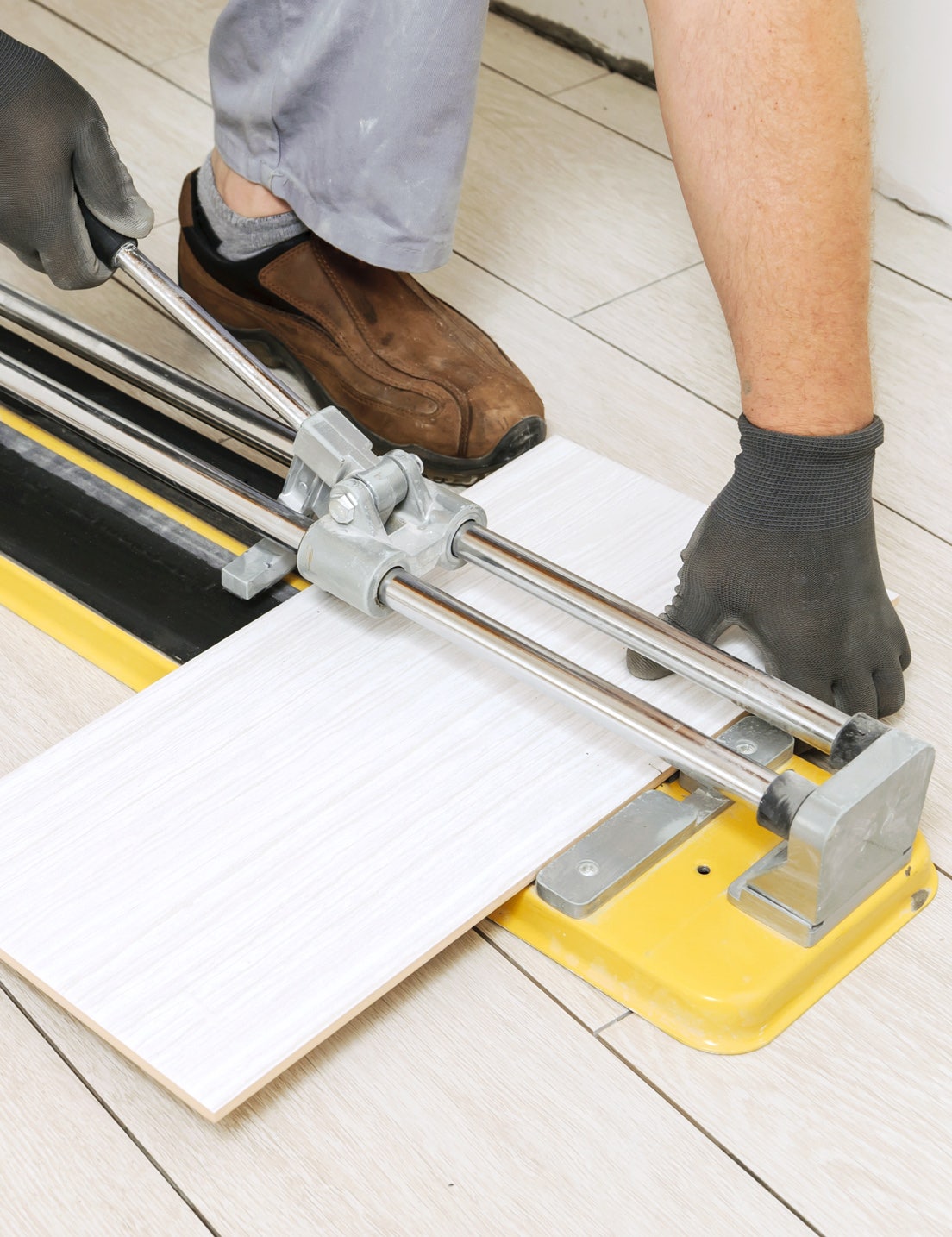


DIY & Advice
Working Safely With Tiles
Your safety is our number one concern, so let's take 5 to run through how to work safely with tiles.


Cutting Tiles Safely
Ceramic tiles are non-flammable, do not release any odours, vapours or chemicals and are considered non-hazardous to health under normal conditions during storage, handling and when installed.
Tiles are made from a combination of clays, feldspars and other naturally occurring minerals, some containing silica. The raw materials are mixed together and fired at high temperatures. As a final inert product, they will contain small amounts of sintered crystalline silica which is harmless unless it is finely ground as dust and inhaled.
Dust containing crystalline silica can be produced by dry mechanical cutting and grinding of concrete, stone, brick and ceramic tile during installation or by operations such as demolition and disposal. Grinding back or levelling the substrate along with the mixing of grouts and adhesives may also produce harmful dust if inhaled.
Wherever possible, cut tiles using a score and snap cutterand before you start any cutting, review our General Safety tips and wear the right gear from head to toe, in particular an approved mask. Avoid dry cutting or grinding with an electric grinder or saw. If this cannot be avoided, use equipment fitted with integrated dust collection systems with HEPA filter H or M Class vacuum or water delivery systems. Use an appropriate, approved, well-fitting P2 respirator whenever other controls are not effective to keep dust below workplace exposure standards for airborne contaminants limits (these are available from (Safe Work Australia or State-based WorkSafe Agencies)
Our Hot Tip: Avoid dry cutting or grinding with an eclectic grinder, if this can’t be avoided, use equipment fitted with integrated dust collection systems. Find out more about Cutting Tiles here!
Our Hot Tip: Work Safe Australia or your State based WorkSafe Agency can advise recommended exposure standards for airborne contaminants.
General Safety With Tiles
Remember, if you’re demolishing tiles, we need to ensure your safety and also that of your family, you don’t want silica dust flying around the house.
For an at-home DIYer - let’s keep it simple; wear a silica safe mask at all times and add the safety tips for an event-free DIY.
Breathing Protection
Wear the appropriate P2 Respiratory Protective Equipment (RPE), which must comply with the standard AS/NZS 1716 – Respiratory protective devices. Check the product information to ensure your RPE is P2 certified and AS/NZS 1716 compliant.
Hearing Protection
When using any powered cutting or grinding equipment, always use appropriate hearing protection.
Eye Protection
Whether you are cutting tiles with score and snap, wet saw, electric grinder or tile nippers, always wear appropriate safety glasses. Sharp pieces of tile and stone, even very small ones, are better kept away from your eyes.
Clothing
When cutting tiles or working with adhesives, it is always advisable to wear protective gloves, steel-capped boots, protective workwear such as long pants and a long sleeve shirt.
Bending and Lifting
Remember that tile boxes can be heavy. Bend your knees and lift carefully. Get help if you need it, especially with large format tiles! Don't try to lift large format tiles by yourself - ever.




What Is Silica?
Many common building materials contain silica. Silica is a natural element that makes up 59% of the earth’s crust and is the main ingredient in the vast majority of natural stones such as granite, slate and sandstone as well as in sand and soil and clay.
Because they are made from natural materials, silica is found in natural stone, engineered stone, bricks, tiles, glass, mortar, cement, concrete slabs and blocks in varying amounts. There are different forms of silica but crystalline silica can cause serious health problems if the dust is inhaled or swallowed.
The amount of crystalline silica in products can vary. Indicative examples include:
- ceramic tiles: 5% to 45%
- engineered stone: 80% to 95%
- Sandstone: 70% to 90%
- Granite: 25% to 60%
- Slate: 20% to 40%
- autoclaved aerated concrete: 20% to 40%
- concrete: less than 30%
- brick: 5% to 15%
Crystalline silica dust can be harmful when it's inhaled over a long period of time at low to moderate levels, or for short periods at high levels. Silica is safe but if you create dust by cutting, drilling or grinding materials that contain silica (and also during the crushing or demolition and disposal of these products), breathing the dust can cause silicosis, a form of occupational lung disease caused by inhalation of crystalline silica dust causing inflammation and scarring in the lungs. Breathing amounts of silica dust above recommended levels can also cause emphysema and bronchitis and even lung cancer or kidney disease.
Silica dust particles are much smaller than normal dust (some so small they may not be seen). They can get deep into your lungs and stay there, permanently damaging the lung tissue and eventually leading to serious lung diseases in some people.
Our Hot Tip: Please read our important information about Silica before starting any tiling job.
